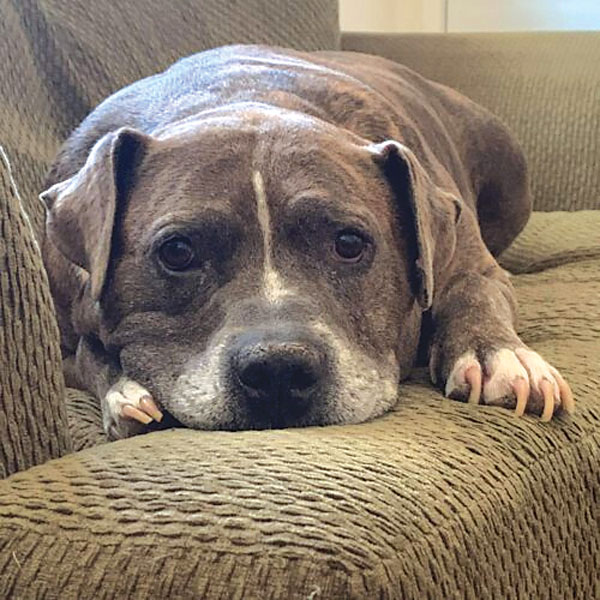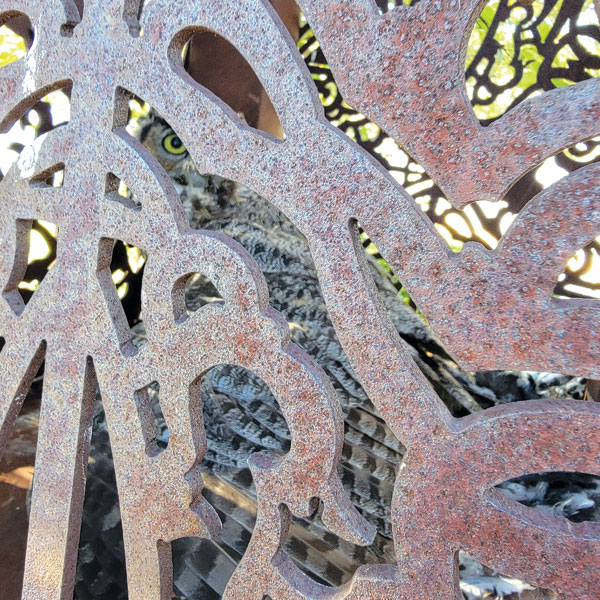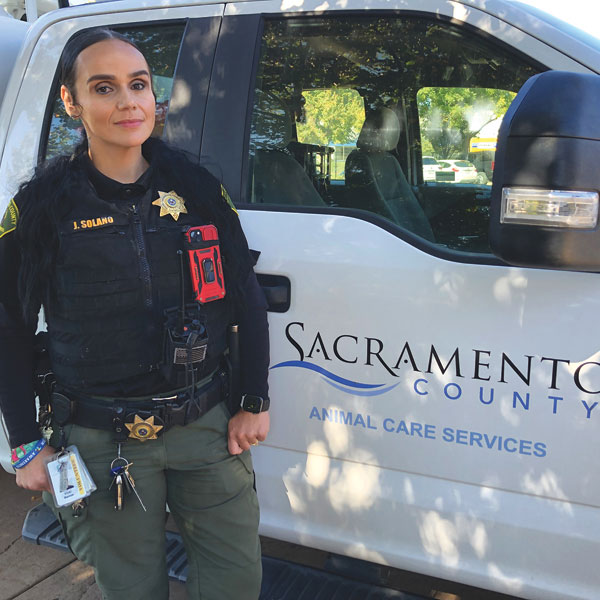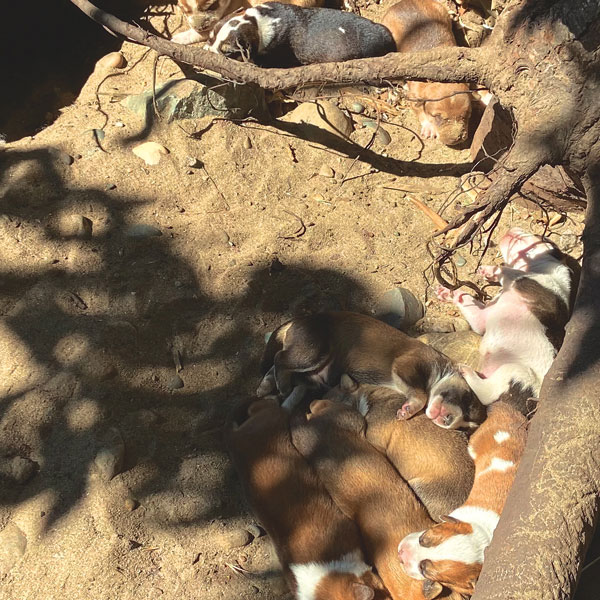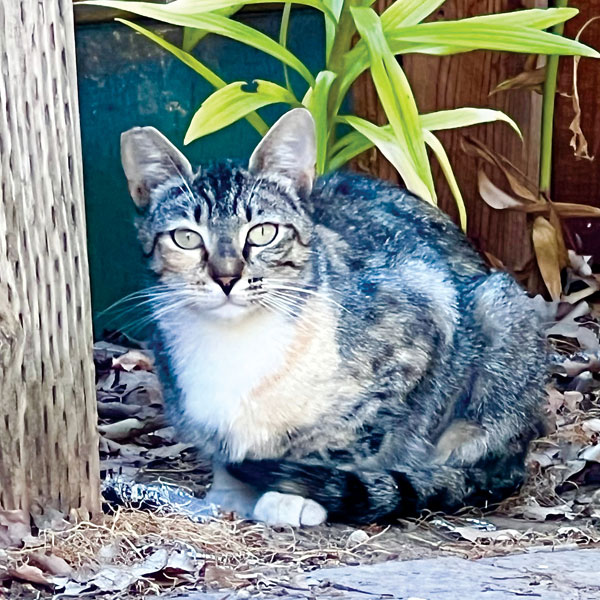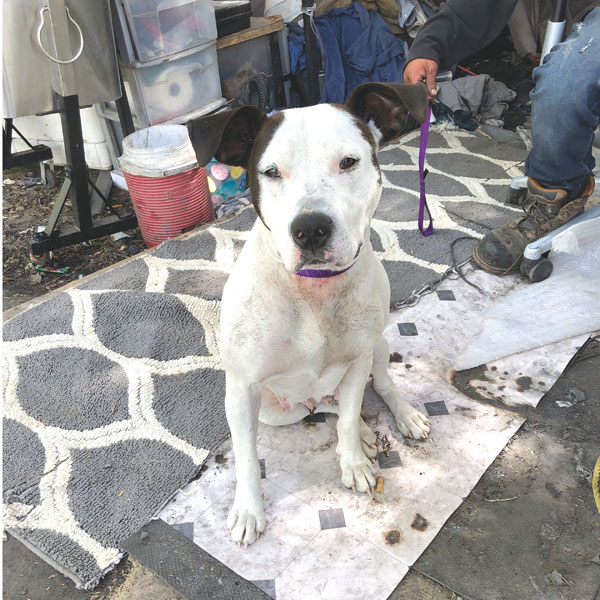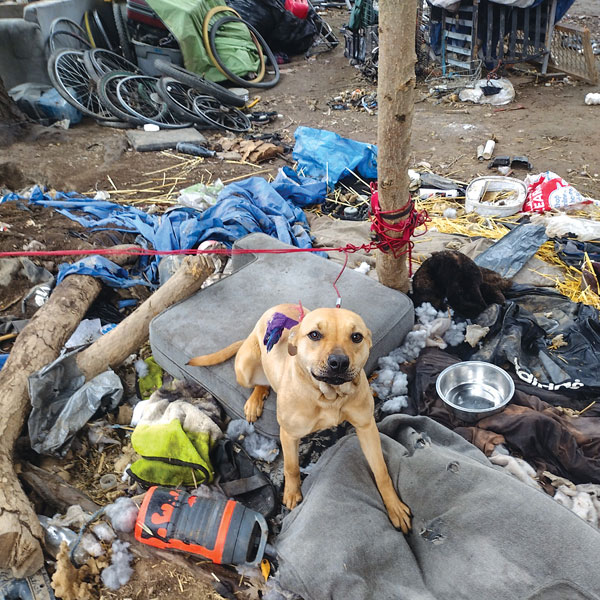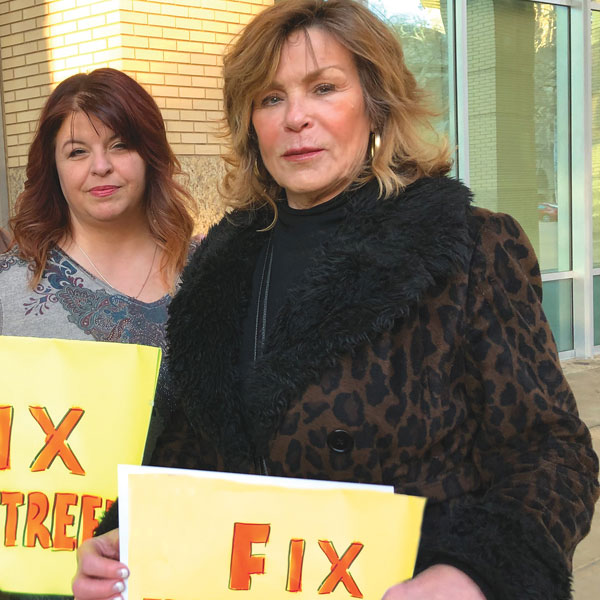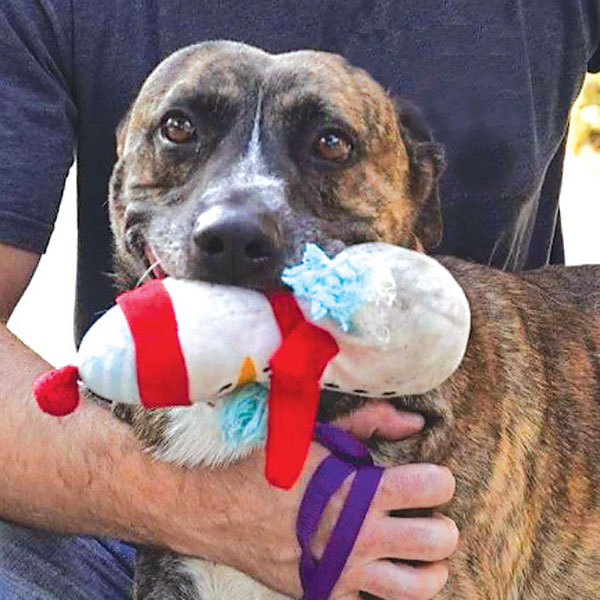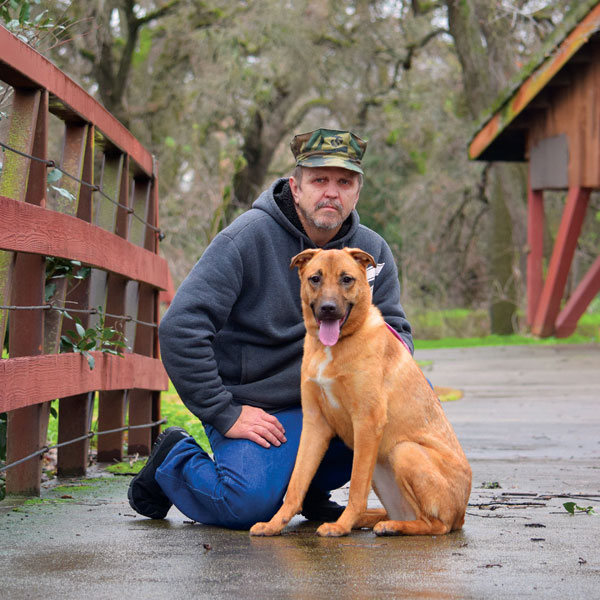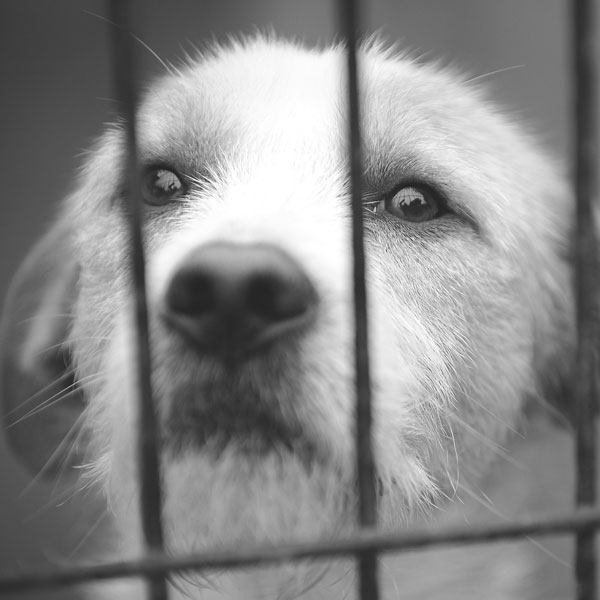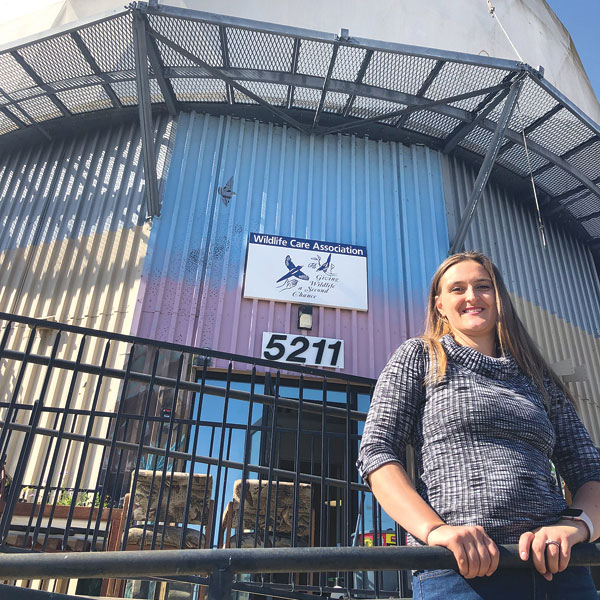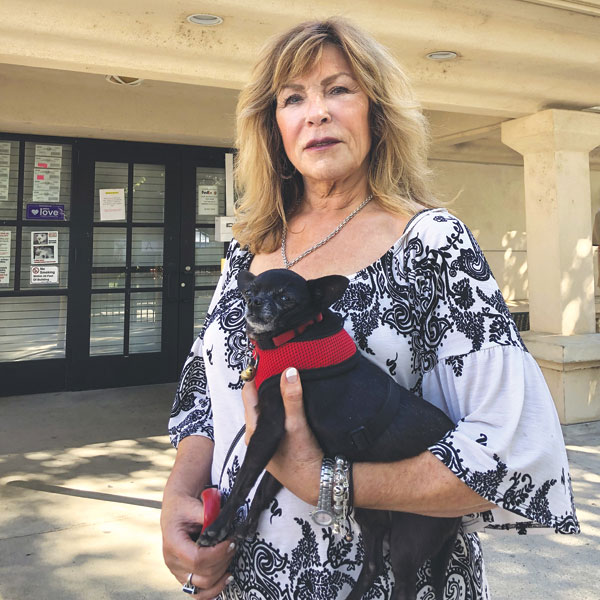Pets and Their People
You’ve Got A Friend
Buggles, a pit bull mix with a tongue-forward smile, had skin infections across his face and body. Lilo faced death without immediate medical care. Markie’s new family received free dog food and preventive medicine after adopting the easygoing mutt.
All three stories reflect the work of Friends of Front Street Animal Shelter, a nonprofit established in 2001 to help animals at the city shelter. Last year, Friends brought in $750,000, mostly from individual donors.
Death Trap
The call came into the Wildlife Care Association in early September. A great horned owl was caught in a metal art structure at the Franklin Light Rail Station near Consumnes River College. The large bird of prey had been trapped for at least 24 hours.
Chris Lay, a Wildlife Care volunteer with eight years of experience, was first to respond. “He was alive, but there was no way to get him out,” she says.
Call Of Duty
It was a sweltering summer day in 2022 when county Animal Control Officer Jessica Solano responded to a call about a dog named Bowbii.
Bowbii, a 170-pound Caucasian shepherd living outside, was severely malnourished, immobile and covered with maggot-filled skin infections.
“It was the most challenging call I have ever done,” Solano says. “The dog needed urgent medical care and the owner had failed to provide that care.”
Where’s The Urgency?
It’s illegal in California to deprive an animal of food, water or shelter.
It’s a crime to tether or chain a dog to a stationary object for longer than three hours in a 24-hour period. It’s against the law to allow that rope or chain to become entangled.
Are unhoused people exempt from these laws? Their dogs are denied food, water, shelter and the ability to move freely on a daily basis.
Fight For Ferals
The temperature hovered around 100 degrees in August when feral cat trapper Maria Calderon took three homeless kittens to the city’s Front Street Animal Shelter.
Calderon trapped the 6-week-old felines earlier that day. “One had an upper respiratory infection—discharge coming from his eye. I wanted to get them off the street,” says Calderon, who has been trapping in Sacramento for two years.
With Front Street’s policy to take only ill and injured cats, Calderon expected the shelter to give the kittens a safe haven and medical treatment.
That was not the case.
Where Is Spay and Neuter?
Gov. Gavin Newsom included $50 million in the 2020-21 state budget to stop the killing of adoptable dogs and cats in California animal shelters.
It was a bold move. Then came the hard part. How should those dollars be spent? Where can they make the biggest impact?
Here’s where things went wrong. The governor assigned the responsibility of dishing out the money to the UC Davis Koret Shelter Medicine Program.
Out Of Control
Sacramento is not “no-kill.”
In 2022, the city’s Front Steet Animal Shelter killed 747 dogs and cats. The county’s Bradshaw Animal Shelter killed 738.
By mid-July this year, Front Street killed 547 animals, more than 150 over last year’s pace.
The majority of animals were euthanized because they were too old, too aggressive, too fearful at the shelter—and there are just too many.
Front Street Animal Shelter took in 6,306 stray dogs and cats last year. Bradshaw Animal Shelter took in 7,380. Intakes are up. Adoptions are down. Shelters are over capacity.
Where are all these animals coming from?
Calls For Help
The questions were straightforward. Does Front Street Animal Shelter provide policies and protocols to 311 on how to respond to animal-related requests?
How do 311 call agents determine if a situation is serious enough to dispatch an animal control officer?
How does 311 address urgent situations when animal control is days behind responding to requests?
Where Is Animal Control?
There is a hidden world in Sacramento, off the grid and unknown to most. Dogs in small cages or padlocked to trees and poles. Chains tangled with little room to move. Many without food, water or shelter.
These are the dogs of homeless camps.
“You know those commercials on TV?” Debbie Tillotson says. She’s talking about the heart-wrenching public service ads that expose the underworld of animal abuse. “You can easily insert Sacramento. This is your backyard, it’s the same thing.”
Worse Than Imagined
The meeting was touted as a Community Participation Workshop. It was anything but.
Its purpose was to give the public an opportunity to share comments, concerns and suggestions with the Animal Care Citizens Advisory Committee, a seven-member panel that makes recommendations to the City Council regarding the Front Street Animal Shelter.
Community members who turned out to have an open discussion about the city shelter were shut down after two minutes of comments—four minutes if the committee had no follow-up.
Questions from the public went unanswered. Dialogue was zero.
Tell It To Waffles
Waffles was a stray when he arrived at the city’s Front Street Animal Shelter last September. The friendly 3-year-old shepherd/bull terrier mix became a shelter favorite. Volunteers called him a “belly-rub addict.”
The brown and black brindled canine was adopted Oct. 6 and returned Oct. 18; adopted again Dec. 11 and returned Dec. 15.
One day later, Waffles was euthanized.
No More Bellas
This is about Bella and the system that failed her.
Dec. 4, a neighbor calls 311 about a dog at her apartment complex in South Natomas. The canine is left 24/7 on a small uncovered patio with no food or shelter. Storms are raging, temperatures are in the 30s.
Photos taken over the fence show a short-hair, medium-size, brown dog on a 3-by-5-foot cement patio. Her ribs protrude. She stands in her feces.
Stop The Breeding
More than 100,000 adoptable dogs and cats are killed in California animal shelters each year—second only to Texas.
California has made progress. In 1998, we destroyed a half million dogs and cats annually. That year, the Hayden Act established state policy that no adoptable or treatable dog or cat can be euthanized at an animal shelter.
The killing slowed, but didn’t stop. Breeding continues. Shelters are overwhelmed.
Recognizing that we’ve fallen short, Gov. Gavin Newsom allocated $50 million in the 2020-21 state budget to make California a “no-kill” state.
Rescue Reset
The downy-feathered bird was almost lifeless, alone in the grass with no mom in sight. A small nest rested in the branches of a crepe myrtle a few feet away.
He was younger than a fledging, who would have hopped and fluttered in an attempt to fly. With no protection, the chick would not survive a roaming cat or the afternoon heat.
I returned the youngster to his nest. After an hour of waiting and watching, no mom or dad returning to the scene, I placed the chick in a box and drove to Sacramento’s Wildlife Care Association.
Fixing Front Street
A dog with no microchip, no ID tag. A door left open or a hole in the fence. Someone willing to do the right thing—get the dog off the street.
Now what? Is taking the lost canine to a local animal shelter the best way to reunite him with his owner? Is that where he will be safe? Is that where his parents will look first?
Or is it better to hold onto the dog, place signs around the neighborhood, post photos on social media, walk door to door?
Phillip Zimmerman, manager of the city’s Front Street Animal Shelter, likes the second option. So much so that he has instituted a “managed intake” policy at Front Street.

